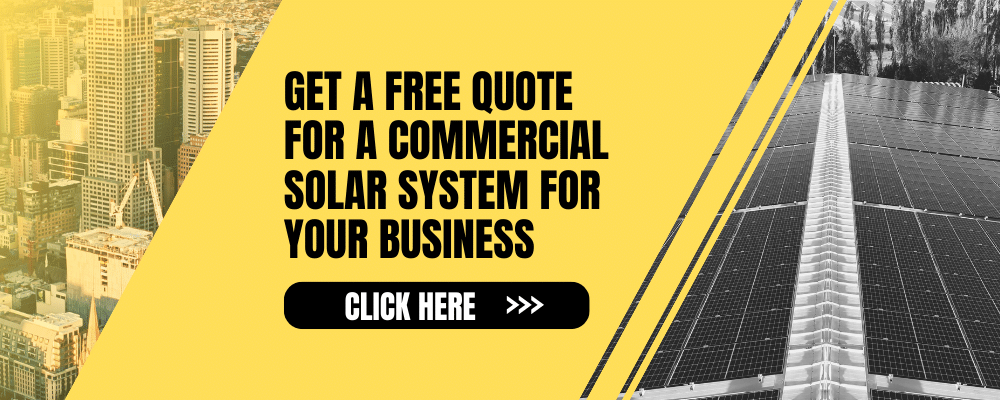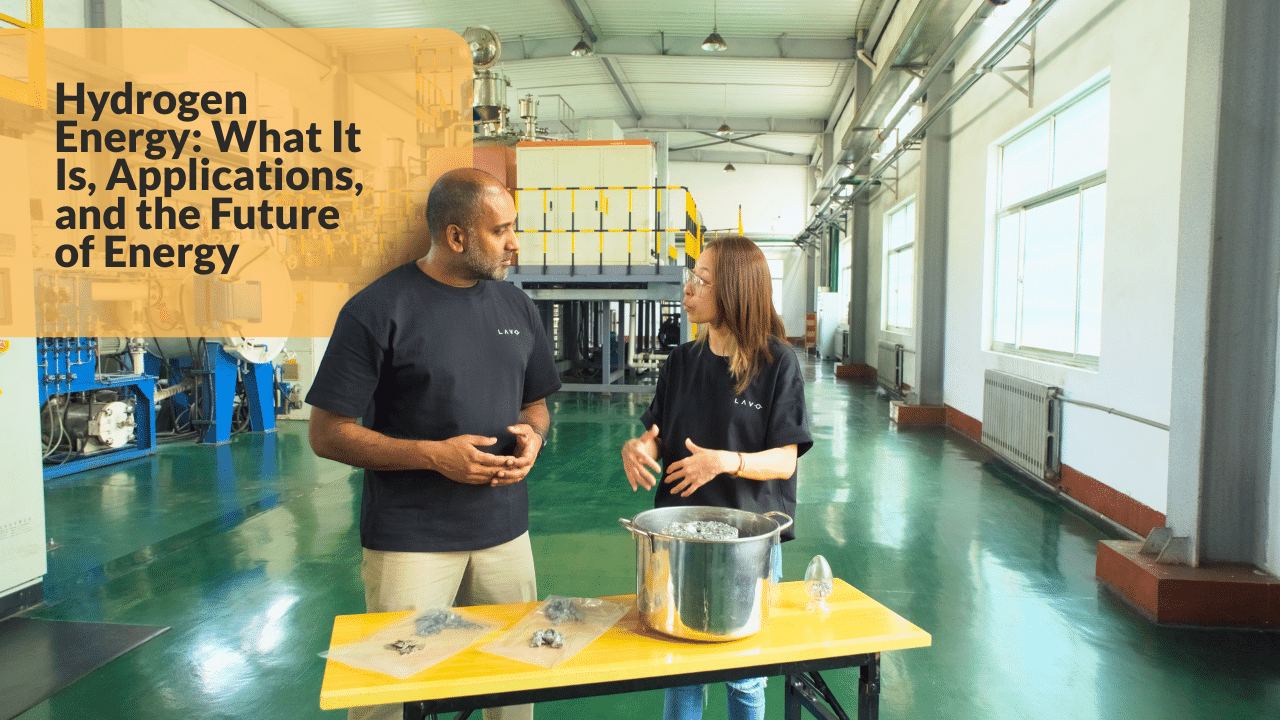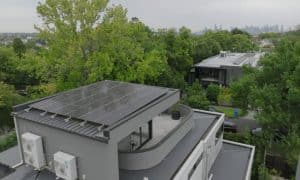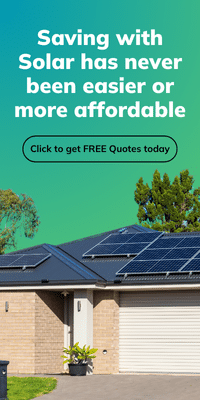Hydrogen is the universe’s most abundant element, but down here on Earth, it needs a bit of coaxing to become useful. In energy terms, hydrogen is a clean, flexible, and increasingly compelling alternative to fossil fuels. But how does it stack up next to solar, wind, and coal?
In Episode 2 of Energy Matters, we visited the hydrogen production facilities of LAVO in China. We got to see firsthand the fascinating process behind the creation of hydrogen energy and a peek into its future.
What is hydrogen energy?
Hydrogen energy refers to the use of hydrogen gas (H2) as a fuel source. It’s not an energy source on its own like coal or sunlight. Instead, it’s an energy carrier. Hydrogen must be produced, usually by splitting water (H2O) using electricity in a process called electrolysis or through extracting it from fossil fuels, which unfortunately emits carbon dioxide.
When hydrogen is used in a fuel cell, it produces electricity, heat, and only water as a by-product. No carbon, no smoke, no soot. Just clean energy, if it’s produced the right way.
Comparing hydrogen to other energy sources
Cost
- Fossil fuels: Still the cheapest in terms of upfront cost, particularly coal and gas.
- Solar and wind: Rapidly falling in price. Solar is already the cheapest source of new electricity in many parts of Australia.
- Hydrogen: Green hydrogen (from renewables) is still expensive, costing around $5–$9 per kilogram. That’s expected to drop to $2/kg by 2030.
Minerals and materials
- Fossil fuels: Require extraction, refining, and burning. High land and water impact.
- Solar: Needs rare earths and heavy metals for PV panels.
- Wind: Uses steel, copper, and magnets (often containing neodymium).
- Hydrogen: Electrolysers need platinum group metals. Storage can use metal hydrides or high-pressure tanks.
Emissions
- Fossil fuels: Massive CO2 and particulate emissions.
- Solar and wind: Zero emissions during operation. Some emissions in manufacturing.
- Hydrogen:
- Grey: Made from fossil fuels. High emissions.
- Blue: Fossil fuel-based but with carbon capture. Lower emissions.
- Green: Made from renewables. Near-zero emissions.
Output and flexibility
- Fossil fuels: High output, always-on, but not flexible or clean.
- Solar and wind: Intermittent. Need batteries or other storage.
- Hydrogen: Can store energy long-term. Can be used for power, transport, and industry.
Real-world applications
- Fossil fuels: Power stations, transport, heavy industry.
- Solar/wind: Homes, businesses, and grid-scale energy.
- Hydrogen: Emerging uses in hydrogen vehicles, backup power, grid balancing, industrial heating, and even aviation.
Enter LAVO: a home-grown hydrogen hero
Australia’s LAVO has flipped the script on hydrogen energy. Most hydrogen systems need high-pressure tanks or cryogenic storage, both tricky and potentially risky at scale. LAVO takes a different tack.
The LAVO system stores hydrogen in solid form using patented metal hydrides. It works like this:
- Solar panels feed power to an electrolyser
- Electrolyser splits water into hydrogen and oxygen
- Hydrogen is stored safely in a metal hydride unit
- When needed, a fuel cell converts the hydrogen back to electricity
It’s modular, scalable, and designed for everyday households and small businesses. No high-pressure cylinders, no liquid hydrogen, no fuss.
LAVO also sets itself apart with Aussie manufacturing, smart integration with solar and batteries, and a mobile app that gives users control. It’s long-lasting too, 20,000 charge/discharge cycles compared to 6,000 for a typical lithium-ion battery.
Sherry Feng, Senior Business Manager for LAVO, caught up with Rosh in Episode 60 of our podcast Road to ZERO.
“So the metal hydride is… a metal alloy. So when the metal alloy encounters with hydrogen gas, it turns into metal hydride… it’s going to store hydrogen in a really safe way and this is what LAVO’s offering right now… the metal hydride stores the hydrogen at 30 bar at room temperature for no degradation, and you can even use it for 20,000 cycles… this is the unique technology LAVO brings to the market.”
Looking ahead: will hydrogen power the future?
Hydrogen won’t replace renewables. It’ll work with them. As solar and wind provide cheap electrons, hydrogen becomes a way to store and move that energy. Think of it as the mate who brings the esky to the beach; reliable, handy, and ready when the sun goes down.
Australia is already pushing ahead with hydrogen hubs, export plans, and research funding. If green hydrogen costs drop as forecast, it could become a key player in transport, mining, agriculture, and remote power.
In short, hydrogen’s not just hot air. It could be the missing link in Australia’s clean energy future, and LAVO is leading the charge, one hydride at a time.
Watch the LAVO Hydrogen segment or catch up on Episode 1 of Energy Matters on 9Now.










































